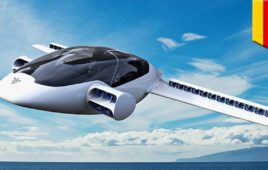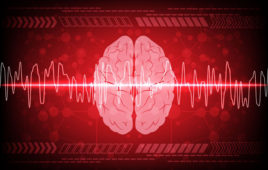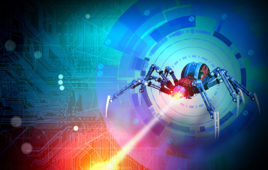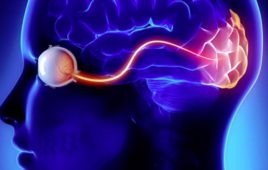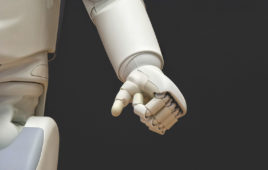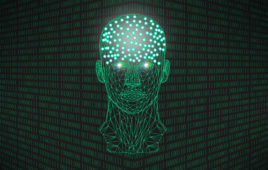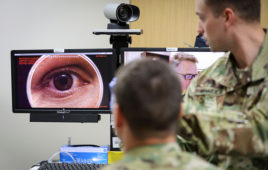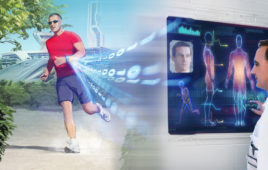The air taxi could become a viable mode of urban transportation in the future, taking cars off the road, saving time, and obliterating urban boundaries. The new flying car donning the looks of a helicopter-drone hybrid will initially cruise at a speed of 180 mph, with the ability to seat few passengers, including a pilot.…
Human Machine Interface systems: Harmonising man and machine
Human-machine interface (HMI), or how clinicians and patients interact with technology, is at the very heart of medical care. In fact, HMI technology, robotics, functional electrical stimulation, and brain stimulation have been found to possess immense potential in speeding up recovery, improving patient monitoring, and saving lives. There is no arena in medical treatment that…
Emerging technologies in speech BCI
Speech, as we know, is the primary avenue of communication between people. But some people are robbed of their ability to speak by neurodegenerative diseases, strokes, and brain injuries. In such conditions, patients are unable to communicate, despite their brains’ speech centers remaining intact. Fortunately, neuroscientists have come up with synthetic speech algorithms that help…
Use of AI for cybersecurity
Given the plethora of cyber threats, artificial intelligence (AI) has emerged as a highly valuable domain as it involves leveraging AI to identify and stop cyber-attacks with a minimum of human intervention. AI tools and techniques autonomously identify, discover, predict, justify, act, and learn about potential cybersecurity threats without needing much human intervention. In the…
Technological advances in smart city development
Urbanization is a rapidly-growing phenomenon. As per the United Nations estimates, two-thirds of the world’s population will live in urban areas by 2050. All this necessitates the development of smart-city initiatives backed by environmental, social, and economic sustainability to keep pace with the rapid expansion that will impinge heavily on cities’ resources worldwide. Among many…
Melexis introduces ASIL-ready Hall sensor for safe autonomous driving
Melexis, a provider of automotive semiconductor sensors, has launched the MLX91377 ASIL-ready Hall sensor IC to better secure automotive systems, such as for electric power-assisted steering. The MLX91377 sensor is Highly effective in steering torque and general automotive sensing. It offers functional safety (per die) and can detect internal failures and enter into a “safe…
New solar fuses offer higher amperage in a streamlined, single-case design
Littelfuse, Inc., a global manufacturer of critical technologies in circuit protection, power control, and sensing, recently announced the expansion of its SPXI series in-line solar fuses to include 35 to 60 amperage models. Designed to integrate into in-line assemblies within a wire harness, these 1500 V DC solar fuses protect photovoltaic (PV) installations from overloads…
Brain implants – Can they make the blind see?
Recent advances in neuroscience and neurotechnology promise restoration of functional sight to the blind through sending signals straight to the brain’s visual cortex. Similar to cochlear implant that has done wonders for the deaf, research is under way to restore visual perception to the blind through an implant that work by stimulating the visual cortex…
Pluses and perils of face recognition
Built on computer programs that analyze images of human faces to identify them, face recognition technology has seen an amazing maturity in a relatively short amount of time. Law enforcement agencies use it to keep society safer, retailers to reduce the incidence of thefts, airports to enhance travelers’ comfort and security, and cell phone companies…
Living with humanoid robots
The use of humanoid robots is becoming widespread all over the world. Humanoid robots are designed to mimic the human body and differ from other kinds of robots such as industrial ones in that their movement is human-like, based on legged locomotion, especially biped gait. They move about the “real world” and interact with it,…
BACS – Facilitating transition to smart buildings
Recent years have seen a growing trend for smart buildings equipped with Building Automation and Control Systems (BACS). The adoption of BACS offers multiple advantages such as the reduction in building energy consumption, improvement of the quality of life of occupants, and integration of renewable energy systems by providing flexibility to the connected energy grids.…
Wireless power — fuel of the future
Wireless Power Transfer (WPT) is a technology that allows the transfer of electric power without wires. Based on technologies using electric, magnetic, or electromagnetic fields, WPT is capable of supplying power from a standard AC source to the batteries and devices which are compatible, without any physical connectors. This technology utilizes the electromagnetic field generated…
Role of AI in legal practice
Artificial intelligence (AI) has been making inroads into nearly all walks of life today. It has led to a paradigm shift in various fields, necessitating the reinvention of their operating and business models. Defined as “the science and engineering of making intelligent machines” that employ “cognitive computing” (enabling computers to learn, reason, perceive, infer, communicate,…
The increasingly sophisticated applications of Virtual Reality
Recent years have seen increasing use of immersive virtual reality (VR) engineering systems that enable engineers to view their project in 3D quality and spot any flaws or potential risks before implementation. The use of 3D modelling tools and visualization techniques has no doubt become an essential part of the design process as it enables…
Autonomous vehicle – Long, bumpy road ahead
As AV (autonomous vehicle) technology undergoes continuous improvement, the sight of AVs taking to city streets is gradually veering into the realm of probability. Major automobile manufacturers have begun to invest significant resources in AV research. It is estimated that the auto industry globally has invested $80 billion in AV development in the last three…
Feasibility of an all-renewable electric grid
Given the imminent threat of climate change due to excessive consumption of fossil fuels, the need to have fully renewable electric grids has acquired critical urgency. To achieve this, we need to run everything on electricity – vehicles, trains, buildings, industrial applications, and so on. But is the transition to a post-fossil-fuel future really feasible,…
5G – Towards a ubiquitous world
The fifth-generation or 5G wireless technology started hitting the market towards 2018-end. Now it is on the threshold of picking up momentum across the world. Among other things, 5G wireless networks herald the progression from mobile internet to massive IoT (Internet of Things) applications, tactile internet, and robotics. The technology is expected to establish a…
Neural engineering devices – Decoding the brain
Neural engineering – involving the design of brain implants connected with external technology based on restoration and augmentation of human function via direct interactions between the nervous system and artificial devices – is a rapidly evolving field. Currently, intensive research is underway to study the coding and processing of information in the sensory and motor…
Virtual hospitals – The future of healthcare
With newer technologies making it easier for doctors to attend to patients from anywhere, the concept of virtual hospitals is gradually taking root. The phenomenon of virtual hospitals, however, goes beyond just telemedicine. In a virtual hospital, there are specialist physicians in a call centre environment — equipped with a variety of screens and technological…
How wearable electronics are transforming healthcare
Wearable technology today has made inroads into diverse fields such as navigation systems, advanced textiles, entertainment, and healthcare. The integration of wearables into healthcare, in particular, has been a focus of intense research and development in recent times. Thanks to advancement in electronics, healthcare wearables are gaining in popularity. With plenty of medical applications for…

